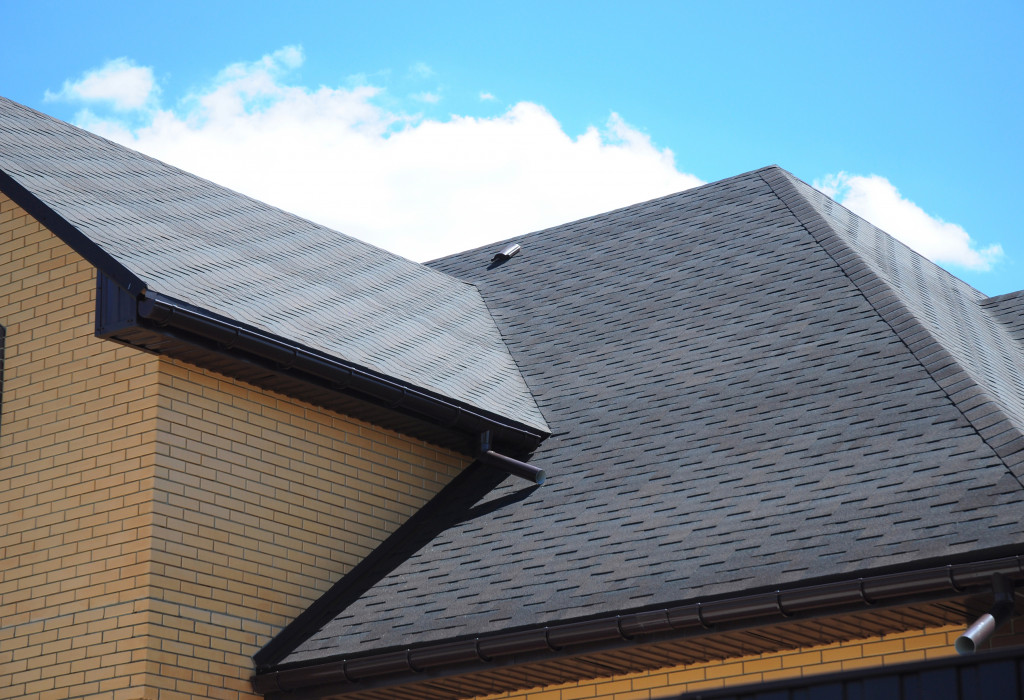Creating A Thorough Plan
A well-executed roofing project can significantly enhance the value and aesthetic appeal of your home. However, many homeowners are often overwhelmed by the complexity and potential cost of such an undertaking. Fast roofing projects are becoming increasingly popular due to their efficiency and ability to minimize disruptions. Whether you’re dealing with a simple repair or a complete roof replacement, understanding the essential steps involved can ensure a smooth and swift completion. This guide aims to provide you with comprehensive insights into planning and executing a roofing project, ensuring that every detail is addressed to achieve optimal results.

Preparing for Your Roofing Project
Embarking on a roofing project requires meticulous planning to ensure everything runs smoothly. The first step in any fast roofing endeavor is to assess the current condition of your roof and identify any immediate needs or potential challenges. This might involve inspecting for visible damage, leaks, or areas of wear that could compromise the integrity of the roof. Proper preparation includes gathering all necessary materials and tools, understanding the scope of work, and setting a realistic timeline that aligns with your goals and availability. This foundational step is crucial for minimizing delays and ensuring that the project proceeds efficiently from start to finish.
Specifically, when preparing for your roofing project, it’s essential to conduct a thorough inspection to identify any hidden issues that could affect the project’s progress. This includes checking for structural damage, water infiltration, and the condition of the underlying roofing materials. Once the assessment is complete, you should create a detailed project plan that outlines each phase of the work, from removing old materials to installing the new roof. Additionally, securing permits and scheduling inspections with local authorities can prevent unexpected interruptions. By investing time in this preparatory phase, you set the stage for a fast roofing project that is well-organized and poised for success.
Selecting the Right Roofing Materials
Choosing the appropriate roofing materials is a critical decision that impacts both the functionality and longevity of your roof. The market offers a wide array of options, each with its own set of advantages and drawbacks. Factors such as climate, budget, and aesthetic preferences play a significant role in this decision-making process. Fast roofing projects benefit from selecting materials that are readily available and easy to install, reducing potential delays. It’s also important to consider the long-term performance and maintenance requirements of the materials to ensure that your investment remains protected over time.
For a more specific approach, when selecting the right roofing materials, consider the unique characteristics of vinyl siding, especially for residential properties. Vinyl siding is known for its durability, low maintenance, and cost-effectiveness, making it an excellent choice for homeowners looking to balance quality and budget. Additionally, vinyl siding comes in a variety of styles and colors, allowing for customization to match your home’s exterior design. Before making a final decision, consult with a professional roofing contractor to evaluate the suitability of vinyl siding for your specific project needs.

Understanding Local Building Codes
Navigating local building codes is an essential aspect of any roofing project. These regulations are designed to ensure the safety, durability, and compliance of construction work within specific jurisdictions. Familiarizing yourself with these codes early in the planning process can help avoid potential legal issues and costly fines. Building codes cover a wide range of requirements, including material standards, structural specifications, and installation practices. For a fast roofing project, understanding and adhering to these codes can prevent delays and ensure that the work meets all necessary regulations.
Specifically, when dealing with a vented roof system, it’s crucial to understand the ventilation requirements mandated by local building codes. Proper ventilation is essential for maintaining the health of your roof and preventing issues such as moisture buildup, which can lead to mold and structural damage. This includes ensuring that your roof has adequate intake and exhaust vents to facilitate air circulation. Consulting with a building inspector or a knowledgeable roofing contractor can help you navigate these regulations and ensure your vented roof system complies with all relevant standards.
Hiring a Professional Roofing Contractor
Selecting the right professional roofing contractor is a pivotal step in any roofing project. An experienced contractor brings expertise, efficiency, and peace of mind to the table, ensuring that your project is completed to the highest standards. When seeking a contractor for a fast roofing project, it’s essential to look for qualifications such as proper licensing, insurance, and a strong track record of completed projects. Personal recommendations and online reviews can also provide valuable insights into a contractor’s reliability and workmanship. A skilled contractor will be able to manage the project timeline effectively, coordinate with suppliers, and address any issues that arise during the installation process.
In the context of residential roof repair, hiring a professional contractor becomes even more critical. Residential roofs often require specialized knowledge of specific materials and techniques to ensure repairs are both effective and long-lasting. A qualified contractor will conduct a thorough inspection to identify the extent of the damage and recommend the best course of action. This may include repairing leaks, replacing damaged shingles, or reinforcing structural elements.

Ensuring Proper Safety Measures
Safety should always be a top priority in any roofing project. Roofing work involves significant risks, including falls, injuries from tools, and exposure to hazardous materials. Implementing proper safety measures is crucial to protect both the workers and the property. This includes using appropriate personal protective equipment (PPE), such as helmets, harnesses, and gloves, and ensuring that all safety protocols are strictly followed. For fast roofing projects, maintaining a high standard of safety can prevent accidents and ensure that the work is completed without unnecessary interruptions.
When working with metal roofing, particular attention must be paid to safety due to the specific risks associated with this material. Metal roofing panels are often large, heavy, and sharp-edged, requiring careful handling to avoid injuries. Additionally, metal roofs can become slippery when wet, increasing the risk of falls. It’s important to use proper lifting techniques, secure ladders, and scaffolding, and ensure that the work area is free from debris and obstructions.
Removing the Old Roof Efficiently
Efficiently removing the old roof is a crucial step in preparing for a new installation. This process involves stripping away existing materials to create a clean, solid foundation for the new roof. Proper removal techniques can significantly reduce the time and labor required, making it an essential part of any fast roofing project. Start by ensuring all necessary tools and equipment are on hand, including safety gear, disposal containers, and specialized tools for removing different types of roofing materials. Coordinating with your team to follow a systematic approach will help minimize disruptions and keep the project on track.
In particular, handling the removal of a flat roof requires specific considerations due to its unique structure. Flat roofs often have multiple layers of materials, including membranes, insulation, and gravel, which need to be carefully removed to avoid damaging the underlying deck. Begin by removing loose debris and gravel, then use specialized tools to peel away the roofing membrane and insulation layers. Pay close attention to any areas with water damage or structural issues, as these will need to be addressed before the new roof installation can proceed.
Installing the New Roof Quickly
Installing the new roof quickly and efficiently is the pinnacle of any fast roofing project. The goal is to ensure that the new roof is installed correctly, meeting all safety and quality standards, while minimizing the overall timeline. Begin by organizing all materials and tools in advance, and ensuring that the work crew is well-coordinated and familiar with the project plan. Proper sequencing of tasks, from laying down the underlayment to securing the final shingles, is essential for maintaining a steady workflow and avoiding delays. Regular communication and oversight can help address any issues promptly, ensuring the installation stays on track.
When it comes to shingle roof installation, following a detailed and methodical approach is key. Start by installing the underlayment and drip edge to create a protective barrier against moisture. Next, place the starter shingles along the edge of the roof to provide a solid base for the subsequent rows. Ensure each shingle is aligned properly and securely fastened, taking care to stagger the seams for enhanced durability.

Inspecting the Completed Roofing Work
Conducting a thorough inspection of the completed roofing work is a vital final step in ensuring the success of your fast roofing project. This inspection verifies that all aspects of the installation meet the required standards and that no issues have been overlooked. A detailed inspection should include checking for proper alignment of materials, secure fastening of shingles or panels, and the integrity of seals around roof penetrations. This step not only guarantees the quality of the work but also provides peace of mind that the roof will perform well under various weather conditions.
Involving a building contractor in the inspection process can provide an additional layer of expertise and assurance. A professional contractor can identify potential problems that may not be immediately apparent to the untrained eye, such as subtle signs of structural weaknesses or areas prone to future leaks. The contractor will also ensure that the roof complies with all local building codes and manufacturer specifications. By thoroughly inspecting the completed roofing work with the help of a skilled building contractor, you can confirm that your fast roofing project has been executed to the highest standards, ensuring durability and reliability for years to come.
Addressing Common Roofing Issues
Addressing common roofing issues promptly and effectively is essential for maintaining the integrity and longevity of your roof. Even the best fast roofing projects can encounter problems such as leaks, damaged shingles, or ventilation issues over time. Regular maintenance and early detection of these problems can prevent them from escalating into more significant and costly repairs. It’s important to conduct routine inspections, especially after severe weather events, to identify and address any signs of damage. Swiftly dealing with common roofing issues ensures that your roof remains in optimal condition and continues to protect your home effectively.
Specifically, dealing with issues related to lumber used in the roofing structure is crucial. Lumber can be susceptible to rot, warping, and insect damage, which can compromise the stability of the entire roof. Inspect the wooden components of your roof regularly for signs of moisture damage or pest infestations. If you find any compromised lumber, it’s essential to replace it promptly to maintain the structural integrity of the roof.
Maintaining Your New Roof for Longevity
Maintaining your new roof for longevity involves implementing a proactive approach to roof care. Proper maintenance can extend the life of your roof, ensuring it continues to provide protection and enhance the value of your home. Regular cleaning, gutter maintenance, and prompt repairs of minor issues are key practices in maintaining a roof. Additionally, scheduling professional inspections at least once a year can help identify potential problems before they become major issues. This ongoing attention to roof care is essential for preserving the results of your fast roofing project and ensuring it stands the test of time.
In the case of an eagle tile roofing system, specific maintenance practices are necessary to ensure its longevity. Eagle tiles are known for their durability and aesthetic appeal, but they still require regular upkeep. Clean the tiles periodically to remove debris, moss, and algae that can cause deterioration. Inspect the tiles for cracks or damage and replace any that are compromised to prevent water infiltration.
New and Improved Housing Top
Completing a fast roofing project successfully requires careful planning, the right materials, and skilled execution. From the initial preparation and understanding of local building codes to selecting the right contractor and ensuring proper safety measures, each step plays a vital role in achieving a swift and efficient roofing project. Removing the old roof efficiently and installing the new one quickly is critical to maintaining the project’s momentum. Thorough inspection and ongoing maintenance ensure the roof’s longevity and performance. By addressing common issues promptly and maintaining a proactive approach to roof care, you can enjoy the benefits of your fast roofing project for many years.







